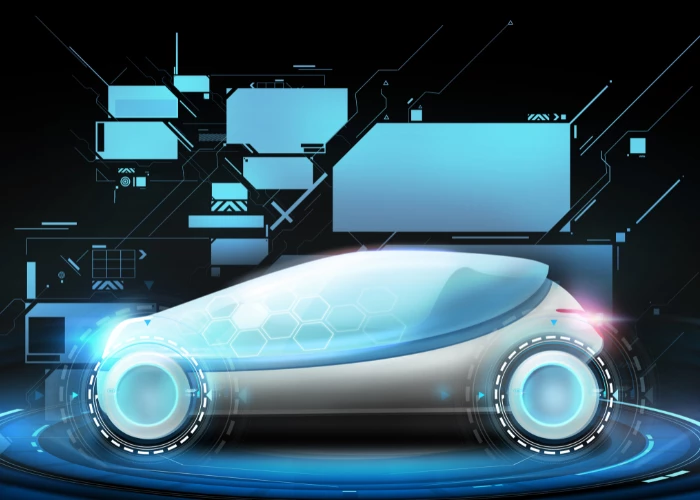Regenerative Braking in an Electrified/Autonomous Landscape
Add bookmarkThe trends of electrification and autonomous driving in the automotive industry are driving technological innovation in advanced braking systems which enhance performance and improve energy efficiency of vehicles.
Regenerative braking systems have been used extensively in motorsports and such systems are being developed for the mass market. Increasingly stringent regulations on fuel efficiency and emissions are one driving factor as manufacturers aim to reduce energy loss in a variety of ways. Automatic electronic braking (AEB) systems are also set to proliferate the market as OEM’s take advantage of increased electronic power and more sophisticated electronic controls. Such systems will also be vital for autonomous driving as brakes, along with other critical vehicle systems, must be controlled to an extremely high degree of accuracy.
A market intelligence report from BIS Automotive, entitled ‘Global Automotive Regenerative Braking System Market Analysis and Forecast (2017-2026)’, the value of the regenerative braking market is set to reach $24.52 billion by 2026. The report also estimates that the volume of the market is set to grow to 16.7 million units by 2026.
Braking, however, has traditionally followed a slower cycle of development than other areas of auto-manufacturing, in part due to the critical nature of the function brakes perform and the subsequent safety considerations. This is brought into stark focus in cases of recalls, many of which are very costly both in terms of repairs and reputational damage. A recent recall of 312,000 BMW’s is one such example. The German car-maker had to recall that number of BMW 1 Series, 3 Series, Z4 and X1 petrol and diesel models in May 2018 due to an electrical fault which caused brake lights to fail (among other vehicle lights) and had the potential to cause vehicles to stall whilst being driven.
It is essential, therefore, that any electrical braking systems meet stringent safety requirements to maintain standards; and that any new systems - be they regenerative or brake-by-wire innovations - are nested in robust failsafe systems in order to avoid costly recalls.
Braking Safety Requirements
In light of the trend towards autonomous driving and the need for high levels of functional safety and redundancy, it is worth reiterating the safety requirements that developers of braking systems will need to focus on for future development. The Society of Automotive Engineers recently updated its Main Brake System Requirements to be followed by OEMs and Tier 1 suppliers. The priorities for system development include:
- Priority 1: Vehicle Deceleration: In any failure mode, appropriate deceleration must be achieved. The basic rule being that the higher the autonomous vehicle manoeuvre speed, the higher the deceleration in degraded mode should be.
- Priority 2: Vehicle Stability: During braking manoeuvre in any first failure mode, the locking of the rear wheels must be avoided.
- Priority 3: Vehicle Steerability: During braking manoeuvre in any first failure mode, the locking of the front wheels must be avoided.
- Priority 4: Secure Standstill: A vehicle that has been brought to a standstill in any first failure mode must be secured independently in that standstill for an infinite time period - typically solved with an independent actuator park brake or gear lock.
Regenerative braking systems are intended to help increase the range of electric vehicles by returning power to the drivetrain in the course of braking, while also contributing to the reduction of energy loss and the reduction of weight. However, as such systems are developed, there is still a strong requirement to prepare for the necessary safety protocols for electric and autonomous vehicles of the future.
Latest Technology Outlook
Several companies are rising to meet these challenges and we can look at just a few of the breakthrough technologies that are in development in the braking sector.
Continental
Continental has introduced what it calls a New Wheel Concept, designed to provide regenerative braking for electric vehicles. Rather than adding technology to an existing friction brake system, the automotive supplier’s tire division has developed a streamlined design for regenerative braking which reduces weight and reduces service costs due to a lifetime brake disk and easy brake pad change.
The redesign means that many parts can be made from aluminium rather than steel, allowing for greater corrosion resistance and less weight - 4.4 pounds of unsprung weight per corner. The New Wheel Concept is based on a new division between the axle and wheel. The wheel consists of two parts - the aluminium star carrier which is permanently bolted to the wheel hub, and the rim well which is bolted to the star. The wheel brake is fastened to the wheel carrier of the axle and engages in from the inside with an annular aluminium brake disk, which in turn is bolted to the carrier star. The internal brake permits a wide brake disk friction radius as the space inside the wheel is optimally utilised.
In spite of the fact that aluminium has a lower specific heat than steel, the decreased reliance on the friction brake and the greater surface area prevents overheating or accelerated wear on the brake. Continental states that the friction brake would only be used in heavy braking situations such as an emergency stop, while regenerative braking would be the primary source of stopping power.
Jaguar I-PACE Road Car
The Jaguar Racing Formula E vehicle can capture enough energy through regenerative braking to extend range by up to 15%. This system is an integral feature of Jaguar’s electric I-PACE road car.
The all-electric I-PACE hits the market this year and incorporates an enhanced brake regeneration system that recuperates almost all braking energy. When the driver lifts their foot off the accelerator the regenerative braking system automatically kicks in to slow the vehicle, while converting energy back to optimise the battery’s range. During heavy traffic, the driver can raise the level of regenerative braking via the car’s touchscreen. In stop-and-go traffic this means there is far greater control of the car’s speed using only the accelerator, without the need to engage a brake pedal. The system helps to increase the vehicle’s battery range up to 480 kilometres. The car will decelerate at up to 0.4G when the driver lifts their foot off the accelerator, and the brake lights illuminate once the vehicle begins to slow at more than 0.12G.
Fraikin Rigid Truck Equipped with KERS
Another interesting development in recent times involves a 12-tonne Iveco Eurocargo from Fraikin’s rental fleet, which it claims is the world’s first rigid truck to utilise Kinetic Energy Recovery System (KERS) regenerative braking technology.
The KERS device was developed by regenerative braking experts Adgero and Skeleton Technologies, and installed by UK vehicle conversion specialists Alternatech. The KERS system works by harnessing the energy created by braking, which is then stored in a set of ultracapacitors. These present a lighter, less costly, and more efficient alternative to lithium-ion batteries. The energy is then used to provide acceleration assistance via an electric motor fitted to the prop shaft.
The KERS technology has already been installed in articulated vehicles but the Fraikin demonstration was the first time the system had been fitted to a rigid truck. Skeleton Technologies’ patented graphene ultracapacitors facilitate better conductivity, and are able to absorb and store more energy. The power is channeled to the electric motor via specialised ECU software. During initial testing in 2017, the KERS system offered a substantial 32% fuel savings when compared to a standard vehicle of the same type, while reducing nitrogen oxide emissions by around 50% and carbon dioxide emissions by approximately 30%.
Adgero stated that the system is primarily designed for multi-drop urban distribution or refuse collection where, the more the brakes are used, the more power is generated. Alternatech, who can complete the conversion in one day, state that the additional cost of the system can be recouped within three years via fuel savings for a typical medium-sized truck. Meanwhile, operation lifespan is estimated to be at least ten years.
Summary
While developments in brake technology in the past have been slow and gradual, the sector is experiencing something of a revolutionary change due to the trends of electrification and autonomous driving. Both of these trends provide a series of challenges and opportunities for OEMs and suppliers, but these must be weighted against the need for functional safety of such a critical system.
As electric vehicles gain more of the market share we can expect more advances in regenerative braking. This is because such systems can help to increase vehicle range, while at the same time, potentially reduce weight and reduce cost.
Meanwhile, regenerative braking systems designed for today’s petrol and diesel-powered vehicles can have a substantial impact on fuel efficiency and therefore, help to reduce emissions. The example of Fraikins’ rigid truck demonstrator also highlights the vast potential benefits to the haulage industries whereby such a system can dramatically reduce fuel consumption and emissions - particularly in urban areas.






























